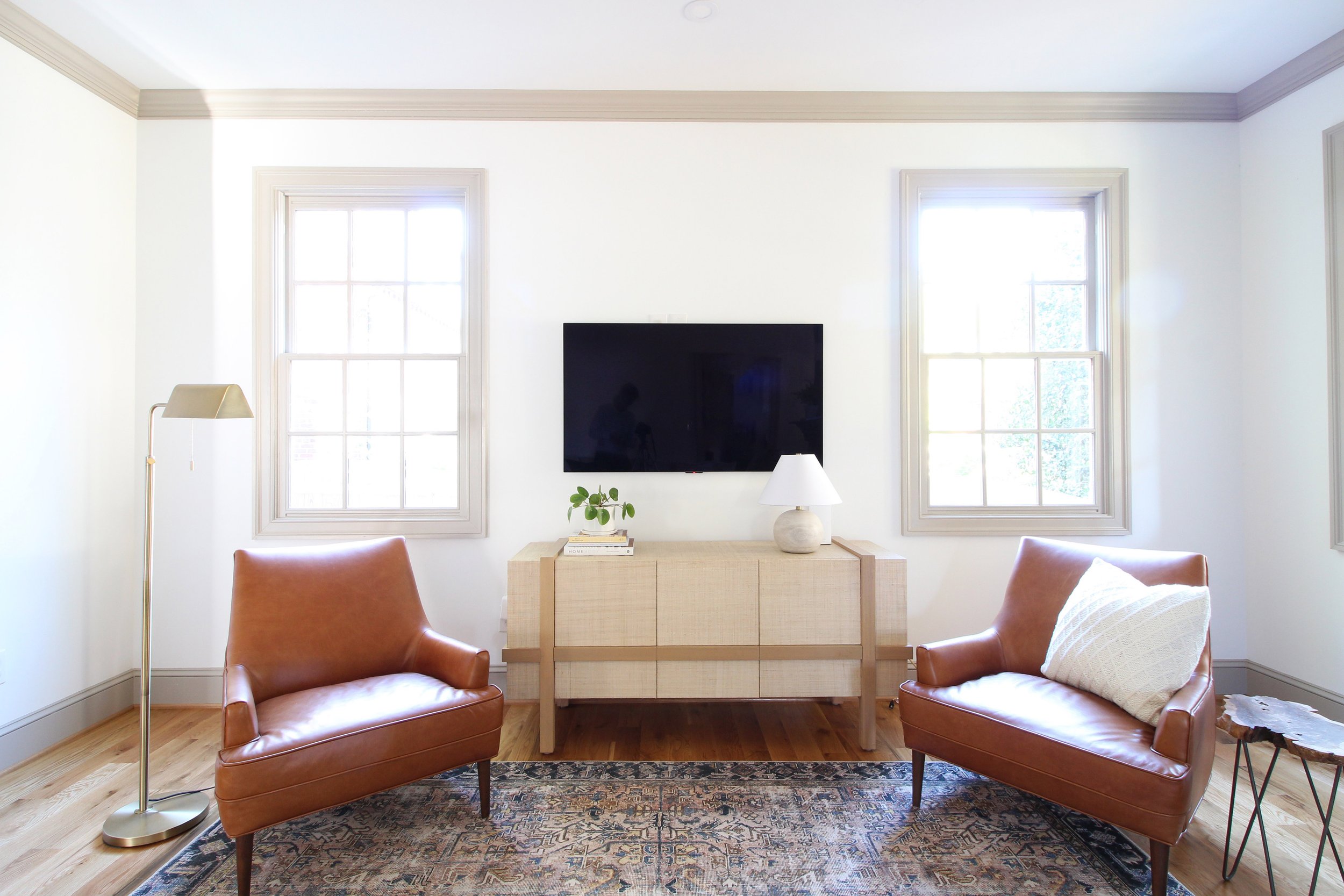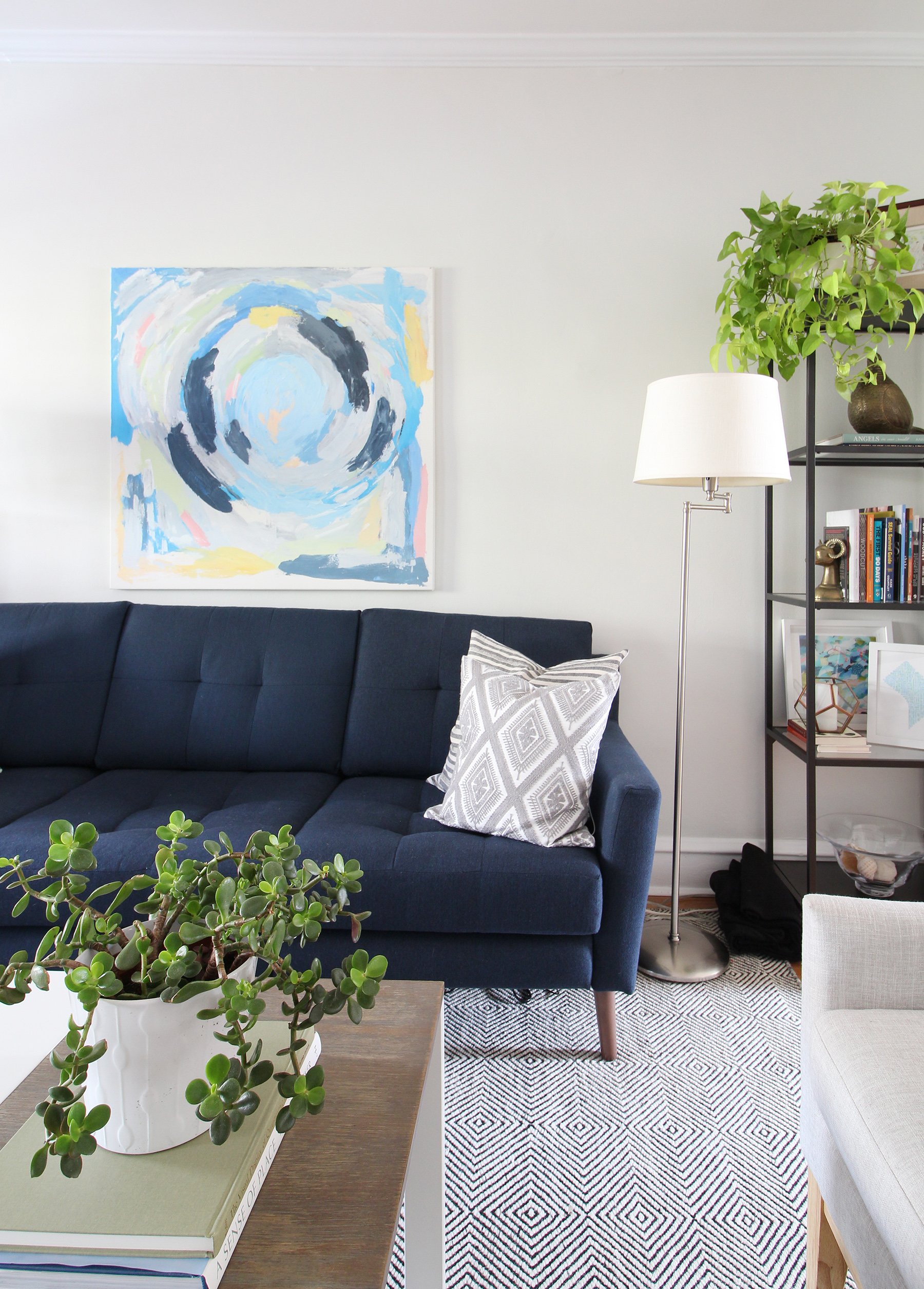How to Choose a Floor Lamp (and Some Favorites!)
A well-chosen floor lamp can be a key piece in transforming a room, adding both functionality and style. Whether you're looking for a reading light or simply want to enhance the ambiance of your space, choosing the right floor lamp is key.
I find that I include a floor lamp in just about every living room design - they add height variation, can fit into tighter spaces, and add an additional layer of light. They’re also great alongside a chair in a bedroom or in any dark corner!
When it comes to selecting the right floor lamp for your space, consider these four tips:
1. Look to Function First
What do you need this lamp to do? Is it a primary way to light a room or is it more for focused task lighting? The purpose of the lamp will dictate the type of bulb and shade you need, as well as the placement of the lamp in the room.
As I talked about in an earlier post, A Lesson on Lighting, the direction the bulb faces is a big factor how much light the lamp offers. When the bulb faces up (uplight) it will offer more ambient light to the whole room while a bulb that faces down (downlight) provides more focused task lighting.
Shades come in many shapes, sizes, and materials. A fabric shade diffuses and softens light (tends to be brighter), while a metal shade directs light in a certain direction (tends to be dimmer).
When it comes to placement, a floor lamp can either stand alone or be paired with a side table. A good spot for a floor lamp is on the side of a sofa, between two chairs, or next to a solo chair. It can also fill a corner if there’s a dark spot in your home!
2. Think About the Style and Metal Finish
The style of your floor lamp is also an important factor to consider. Do you want a modern, minimalist look, or do you prefer something more traditional or ornate? Consider the overall style of your room, as well as the other lighting fixtures and furniture in the space, when choosing a lamp that fits in with your overall aesthetic.
Since the majority of floor lamps are made primarily of metal, you’ll want to make sure it integrates well with the other metals in your space like your ceiling lights, door hardware, and cabinet hardware. Mixing metals is always my preference over one finish throughout. Combos I love are brass + polished nickel and brass + black.
I tend to choose floor lamps in the middle of my design process - they usually complement other elements and play a supporting role.
3. Choose the Right Size
The size of your floor lamp is another key consideration. The scale needs to be both right for the room and the piece of furniture - make sure to look at the dimensions including overall height, shade size, and base size. Usually, smaller furniture = smaller lamp and vice versa.
A lamp with a narrow base and a slim stem can work well in small spaces, while a lamp with a wider base (or tripod base) and a more substantial stem can add weight and balance to a larger room.
Shape can play a role in size too. For example, arched floor lamps tend to be larger overall while straight, single stem lamps tend to be more petite.
4. Take a Look at the Technical Specs
These are all the little factors that can tip the scales one lamp versus another. A few specs to look out for are:
Maximum bulb brightness (often expressed in terms of wattage)
Number of bulbs
Rotary switch (dimmable) vs. one way (one brightness) vs. three way (three brightness levels)
On that last bullet, sometimes you just need to be able to turn it on and off, which means a one way switch is fine, and sometimes you may want a lamp that has different brightness levels to suit the time of day and your needs.
By considering these key factors when choosing a floor lamp, you can find an option that fits perfectly in your space! It’s a mix of art and science - use the tips I shared here, but also trust your gut on what looks right. To help you get started in your search, I’ve rounded up 12 of my current favorite floor lamps. Catch the links to those below!
Floor Lamp Favorites
*This post contains affiliate links, which means Mix & Match Design Co. earns a small commission from your purchase at no cost to you.





